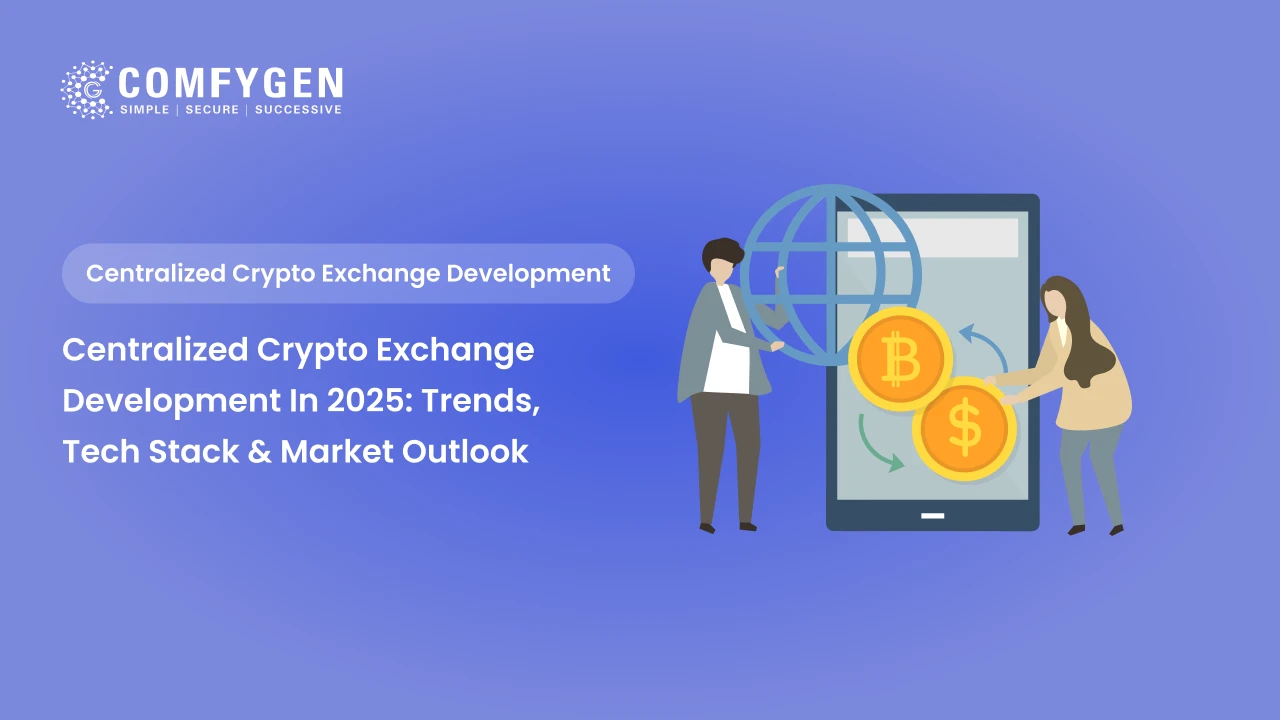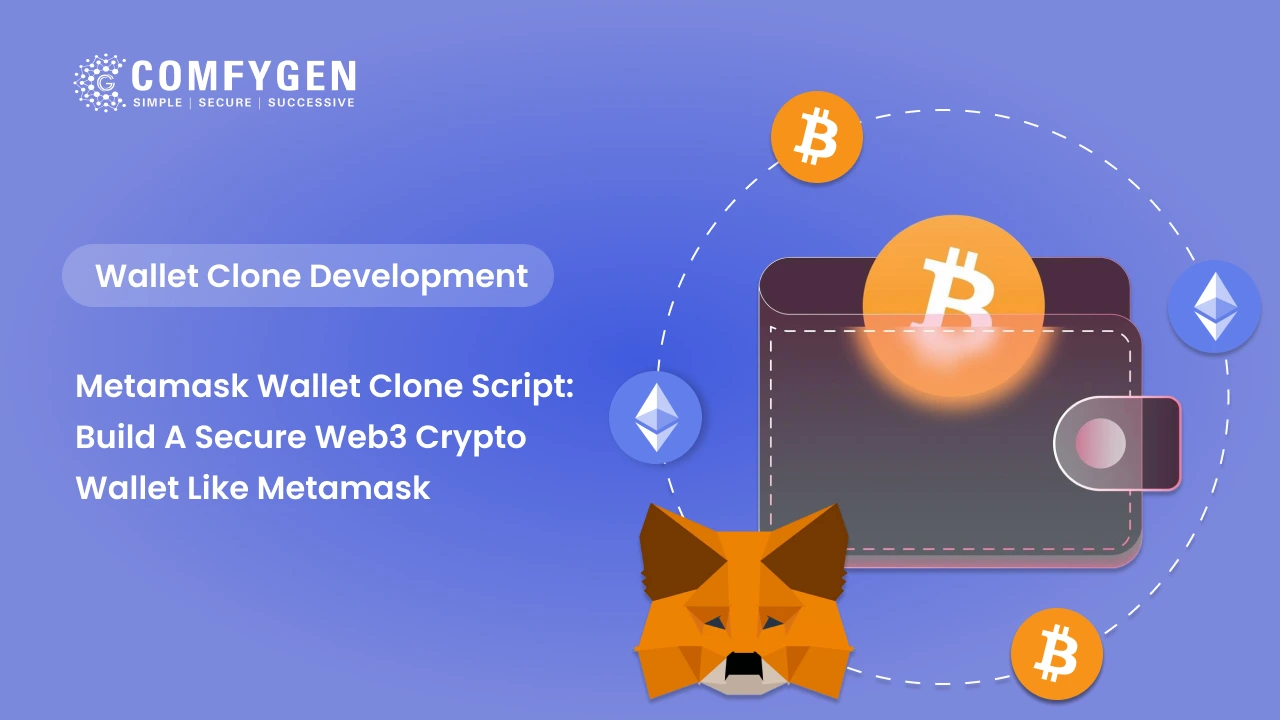Centralized Crypto Exchange Development in 2025: Trends, Tech Stack & Market Outlook
Introduction
As we step deeper into 2025, the global crypto landscape continues to evolve at lightning speed. While decentralized exchanges (DEXs) grab headlines for offering non-custodial trading, centralized crypto exchanges (CEXs) remain the cornerstone of digital asset transactions. Their liquidity, scalability, regulatory compliance, and user-friendly interfaces make them indispensable for both retail traders and institutional investors.
This blog explores the future of centralized crypto exchange development, focusing on the latest trends, the modern tech stack, and the market outlook for 2025 and beyond. Whether you’re a blockchain developer, fintech entrepreneur, or crypto investor, understanding these dynamics is critical to staying ahead in a highly competitive market.
What Is a Centralized Crypto Exchange?
A centralized crypto exchange (CEX) is a digital trading platform where a centralized authority manages user funds, trade execution, and order books. Unlike decentralized exchanges, CEXs operate as intermediaries, providing custodial services and enhanced security mechanisms.
Key Characteristics of Centralized Exchanges
- Custodial Wallets: User funds are stored within the platform’s infrastructure.
- Order Book Trading: Trades are matched through a central order book.
- KYC/AML Compliance: Users must verify their identities to prevent fraud and money laundering.
- Fiat On-Ramps: Support for fiat currencies through payment processors and bank integrations.
- Customer Support: Centralized assistance through tickets, chats, and dispute resolution.
Why Centralized Exchanges Still Dominate
Despite the rise of DeFi, CEXs account for the majority of crypto trading volume due to:
- Superior liquidity aggregation
- Faster trade execution
- Advanced trading tools like margin trading and derivatives
- Better support for institutional onboarding
Leading platforms like Binance, Coinbase, Kraken, and KuCoin exemplify this dominance with billions in daily volume and millions of active users.
Ready to Launch Your
Centralized Crypto Exchange?
Contact Now
Top Trends in Centralized Crypto Exchange Development (2025)
The crypto exchange landscape is transforming rapidly. Here are the most significant trends driving centralized exchange development in 2025:
1. Institutional-Grade Infrastructure
As institutional adoption grows, CEXs focus on scalability, high-frequency trading support, and robust APIs for market makers. Platforms are deploying microservices-based architectures for real-time data processing and uninterrupted uptime.
2. AI & Machine Learning Integration
AI is no longer a luxury — it’s a necessity. CEXs are leveraging AI for:
- Fraud detection & transaction monitoring
- User behavior analytics
- Predictive trading tools
- Smart customer service chatbots
3. Enhanced Security Frameworks
With increasing regulatory pressure and user expectations, centralized platforms are adopting:
- MPC (Multi-Party Computation) wallets
- Zero-trust security models
- Biometric authentication
- Real-time anomaly detection systems
4. Global Compliance Automation
Regulatory landscapes like the MiCA framework (EU) and SEC mandates (US) require CEXs to implement automated KYC/AML tools that integrate with verification APIs and blockchain analytics platforms.
5. CeDeFi Integration
Many CEXs are evolving into hybrid platforms, combining the liquidity of centralized systems with decentralized finance (DeFi) features such as:
- Yield farming
- Token staking
- On-chain lending
This approach is driving user retention while opening new revenue streams.
6. UX-First Mobile and Web Apps
With mobile trading dominating user behavior, CEXs in 2025 are doubling down on:
- Minimalist, intuitive UI designs
- Lightning-fast load times
- Dark mode, customizable dashboards, and real-time push notifications
Tech Stack for Building Centralized Exchanges in 2025
Choosing the right technology stack is vital for scalability, security, and performance. Here’s a modern tech stack powering high-performing crypto exchanges today:
Frontend Technologies
- React.js / Next.js – For responsive, SEO-friendly UIs
- TailwindCSS / SCSS – Lightweight styling and custom themes
- TypeScript – For scalable and type-safe component development
Backend Technologies
- Node.js / Go – For high-throughput, event-driven backends
- Rust – Ideal for core trading engine development (speed + safety)
- Python – Used in analytics, ML integrations, and automation scripts
Database & Storage
- PostgreSQL / MongoDB – Structured and unstructured data storage
- Redis – For caching and real-time market data updates
- IPFS or AWS S3 – For storing user data, KYC files, and trade logs
Blockchain & Smart Contract Integration
- Ethereum, Solana, BSC – To support token listings and transfers
- Web3.js / Ethers.js – For seamless blockchain connectivity
APIs & Real-Time Communication
- RESTful APIs – For mobile/web app integration
- WebSockets – For live trading data, order books, and notifications
- gRPC – For internal microservice communication
Security Tools & Practices
- Multi-signature wallets
- 2FA, biometric login, IP whitelisting
- DDoS protection, rate limiting, and audit logs
- End-to-end encryption
KYC/AML & Compliance Integration
- Tools: Jumio, ShuftiPro, Sumsub
- Chain analysis: Chainalysis, TRM Labs
Must-Have Features in a Centralized Crypto Exchange
A modern centralized exchange must offer a comprehensive feature set to attract and retain users.
1. User Authentication & KYC
- Multi-layer login (password + biometric/2FA)
- Instant identity verification and onboarding
2. Robust Trading Engine
- Real-time order matching and execution
- High availability under heavy loads
3. Wallet Management System
- Hot & cold wallet support
- Secure user wallets with multi-sig
4. Liquidity Management
- Internal liquidity pools
- External liquidity aggregator APIs
5. Fiat Payment Integration
- Credit/debit card payments
- Bank transfers and fiat withdrawal options
6. Admin Panel
- Trade monitoring, user management, compliance logs, and reporting
7. Advanced Trading Tools
- Limit, market, stop-loss orders
- Candlestick charts, indicators, and trading history
8. Referral and Affiliate Systems
- To boost user acquisition through rewards
Regulatory and Compliance Landscape in 2025
Compliance is not optional — it’s foundational.
Key Regulations to Consider
- MiCA (EU): Uniform rules for crypto-asset service providers
- SEC (US): Token classification and exchange registration
- FATF Guidelines: Travel rule implementation for cross-border transfers
- Local Regulations: Varying by country (e.g., India, UAE, Singapore)
How Exchanges Are Adapting
- Automated reporting tools for regulators
- Integration of AI-based AML checks
- On-chain analysis tools for suspicious activity
Data Privacy Compliance
- Adherence to GDPR, CCPA, and emerging data protection laws
- User data encryption and secure access controls
Market Outlook for Centralized Exchanges in 2025 and Beyond
Despite the growth of DEXs and Web3 wallets, centralized exchanges remain highly relevant due to:
1. Continued Institutional Entry
- More hedge funds, asset managers, and fintechs are using CEXs for liquidity and compliance.
- Custodial services are vital for risk mitigation in traditional finance integrations.
2. Global Expansion into Untapped Markets
- CEXs target regions like Africa, Southeast Asia, and Latin America with tailored solutions.
3. Strategic Partnerships
- Collaborations with banks, stablecoin issuers, and payment providers to offer end-to-end services.
4. Hybrid Models
- Many CEXs are introducing non-custodial trading options, NFTs, and tokenized assets alongside core services.
Challenges & Risks in Centralized Exchange Development
1. Security Threats
- Hacks, phishing attacks, and insider threats
- Mitigation: Regular audits, penetration testing, and user education
2. Regulatory Uncertainty
- Rapidly shifting laws can halt operations in certain regions
- Solution: Stay flexible and compliance-ready
3. Scalability Concerns
- Traffic spikes during bull runs can crash poorly designed systems
- Solution: Cloud-native architecture, auto-scaling servers
4. High Competition
- Entering the market today requires differentiation through innovation or niche focus
Choosing the Right Centralized Exchange Development Partner
Selecting the right development company is crucial for long-term success.
What to Look For:
- Proven blockchain development expertise
- Security-first mindset
- Experience with exchange compliance and KYC tools
- Scalable architecture design capabilities
- End-to-end services: UI/UX, backend, wallet, API, DevOps, QA, and support
Questions to Ask:
- What exchanges have you built?
- Can you help with exchange licensing and legal consulting?
- How do you handle smart contract or backend audits?
Build Your Centralized
Crypto Exchange with Confidence
Contact Now
Conclusion
In 2025, centralized crypto exchange development is evolving faster than ever. With innovations in AI, security, compliance automation, and hybrid models, CEXs are not just surviving — they’re thriving. However, success in this space demands cutting-edge tech, compliance readiness, and a focus on user trust.
Whether planning to launch a new exchange or upgrade your existing platform, partnering with the right development team can be the difference between success and stagnation. The time to act is now — because the future of crypto trading is being built today.
Frequently Asked Questions (FAQs)
What is a centralized crypto exchange (CEX)?
A centralized crypto exchange is a digital trading platform managed by a central authority that facilitates crypto transactions, holds user funds, and offers advanced trading tools and customer support.
Are centralized exchanges still relevant in 2025?
Yes, centralized exchanges remain dominant due to their superior liquidity, user-friendly interfaces, institutional-grade security, and regulatory compliance.
What technologies are used in centralized exchange development?
Modern centralized exchanges use React.js, Node.js, Go, Rust, PostgreSQL, Web3.js, and integrate KYC/AML tools, WebSocket APIs, and multi-signature wallets.
How much does it cost to develop a centralized crypto exchange in 2025?
The cost varies based on features, compliance needs, and scalability. It typically ranges from $50,000 to $300,000+ for a full-featured, secure, and scalable platform.
Why choose Comfygen for centralized exchange development?
Comfygen brings deep blockchain expertise, 400+ project deliveries, end-to-end development services, and compliance-ready solutions tailored for startups and enterprises.

Mr. Saddam Husen, (CTO)
Mr. Saddam Husen, CTO at Comfygen, is a renowned Blockchain expert and IT consultant with extensive experience in blockchain development, crypto wallets, DeFi, ICOs, and smart contracts. Passionate about digital transformation, he helps businesses harness blockchain technology’s potential, driving innovation and enhancing IT infrastructure for global success.
Based on Interest

Grocery Delivery App Development Challenges: Common Problems and How to Overcome Them
In today's fast-paced digital age, the online grocery delivery industry is experiencing significant growth. With consumers preferring doorstep facilities over traditional shopping,…









